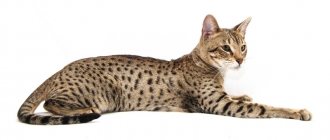Home » Articles about chickens » Redbrown chicken breed
Redbrown hybrid chickens are known for their high productivity. They were bred about 100 years ago, but even now they successfully compete with more modern hybrids. The birds are suitable for large private farms and poultry farms.
Origin of the redbrown breed
Redbros were bred by breeders from Great Britain at the beginning of the 20th century by crossing Leghorns with Cornish and Malayan fighting hens. As a result, productive crosses with massive bones were obtained, which they inherited from fighting chickens.
The Redbrown breed got its name from its red plumage. Their characteristic bright colors are the result of random mixing of genes.
Initially, the breeders were faced with the task of breeding broilers, but the resulting chickens did not have the required characteristics and were classified as egg-meat breeders.
Work on improving this breed is carried out by specialists to this day, but not in the homeland of the Redbrown, but in France and America. In these countries, birds are much more popular. In Russia, they are bred mainly on private farms.
Flaws
- Difficulties in breeding (in the second generation the main advantages are lost).
Features of hens and their distinctive features are their advantages. Therefore, undoubtedly, the Redbrown breed of chickens is a good option for keeping in the household. That's basically all that can be said about them.
Share the material with your friends on social networks - perhaps this information will be useful to them.
Don’t forget – by subscribing to site updates, you can be the first to receive interesting information about feathered beauties!
Did you like our tips? Share with friends on social media. networks!
Description and characteristics
Based on the description, Redbro chickens are distinguished by their impressive dimensions and high productivity. They are grown mainly for the purpose of obtaining dietary meat.
Appearance of the bird
The body weight of an adult male is up to 4.5 kg, of a female – no more than 3.5 kg. You can distinguish a rooster from a laying hen not only by its size, but also by the black feathers on its tail. Chickens also have a much smaller beak than males.
Description of the appearance of representatives of this breed:
- round body;
- massive body with a wide back;
- limbs are powerful and developed;
- paws yellow;
- the wings are compact, tightly fitting to the body;
- the tail is brownish-black, small and slightly raised;
- the head is large;
- the neck is thick and short;
- the beak is small, brownish-yellow;
- the comb is leaf-shaped, erect, rich red in color;
- The color of the plumage is red with a brownish tint.
Breed Temperament
The Redbro chicken breed is friendly. Laying hens, like roosters, do not show aggression towards other animals and people.
Productivity
Redbrown chickens are valued for their high meat and egg productivity. Representatives of this breed grow much faster than other meat-egg birds, and begin to lay eggs quite early.
Meat productivity
Redbro is often called a colored broiler, since chickens quickly gain weight. At two months of age, the bird already weighs about 2.5 kg. In addition, this hybrid is practically devoid of a layer of fat. The meat has a pleasant taste. Chicken carcasses weigh about 3 kg, and roosters - up to 4 kg.
Only young animals are slaughtered, since the taste of chicken meat deteriorates significantly with age.
Egg production indicators
Chickens begin laying eggs after reaching five months of age. On average they produce 180-200 eggs per year. But there are also record holders who bring in 300 pieces a year.
The first eggs are smaller (40-50 g). In older hens, their weight reaches an average of 65 g. The eggs are white or beige in color and have a dense shell, which makes them possible to transport over long distances.
Pros and cons of a hybrid
Redbrown chickens are popular due to the following advantages:
- Versatility . Redbro is considered one of the best egg-meat breeds.
- Rapid growth and weight gain . This indicator is especially important for those who sell chicken carcasses.
- Unpretentiousness in content . Chickens do not require special care and are not picky eaters.
- High survival rate . The indicators are above average both when eggs are hatched by chickens and when they are kept in an incubator.
- Low temperature resistance . Chickens tolerate walks at -5°C and continue to lay eggs.
- Sustained immunity . With proper care, ribs practically do not get sick.
- Flexible character . Redbros can be kept in the same coop with laying hens of another breed.
- Attractive appearance . Representatives of this breed look quite bright and can become a decoration for any yard.
- Short shedding . In redbros, this process proceeds much faster than in other egg-meat chickens.
The disadvantages include the fact that it is not possible to breed pure livestock at home. Young animals have to be purchased from breeders, and unscrupulous sellers pass off unproductive hybrids as redbreds, since the appearance of chickens of this breed is similar to ordinary laying hens.
Character
Despite the presence of fighting blood, redbro chickens are peaceful and accommodating . They are kept with other birds and chickens of other breeds, which does not happen very often. The hybrid is not suitable for cage keeping. Redbro needs to walk on a spacious paddock and collect pasture, as well as rummage in the ground.
Redbrown chickens, the breed description of which is not very different from universal hybrids, attract people with their productivity, which is higher than that of other representatives of the meat and egg breed.
Poultry keeping
Redbros are quite unpretentious in their content. But there are some nuances that should be taken into account when arranging a poultry house for chickens of this breed.
Chicken coop and equipment
An unheated but insulated poultry house is suitable for keeping redbros, which should also be quite spacious. The recommended height of the chicken coop is up to 1.8 m. Containers with sand or ash are installed in the poultry house for cleaning feathers.
It is recommended to keep no more than 20 chickens per 10 m2.
If you plan to grow redbros for meat, it is recommended to keep them in cages.
Perches
Redbro perches are installed in a place protected from drafts. It is recommended to place them at a height of 40-50 cm. The optimal length of the crossbar for one chicken is up to 30 cm, the distance between the bars is no more than 40 cm, their thickness is about 7 cm.
Nests
The recommended height of nests for laying hens of the Redbro breed is 30 cm, depth is 35 cm. It is recommended to place them in a remote and fairly shaded part of the house. There should be one nest for every 4 laying hens.
Video 1: arranging nests and perches in the chicken coop
Video2: The most convenient and compact place
Video3: Nests for laying hens
Feeders
It is recommended to place deep and voluminous chicken feeders along the walls of the chicken coop. They should be made of plastic or metal, since wooden containers will quickly get wet from wet mash. Food containers should be scalded with boiling water every day, disposing of uneaten remains.
Drinking bowls
Plastic or enamel drinkers should also be installed in the poultry house. Metal containers are not suitable because they quickly rust when in contact with water. Ceramic drinkers are not safe for redbirds because they can break off and ingest particles, which can be fatal.
Litter
The litter must remain dry. It should be changed every year with the onset of spring and autumn. It is recommended to use wood shavings, peat or straw as flooring material. The optimal thickness of the litter is from 10 to 15 cm.
Temperature and humidity
The optimal temperature for keeping a redbro broiler in the warm season is no more than +27°C. In winter, chickens feel good even when the temperature drops below +7°C. Additional heating is only necessary if the temperature in the poultry house drops below +5°C.
It is important to avoid drafts. To maintain the humidity level within 25-30%, it is recommended to install a window inside the house. It should be covered with a net to prevent insects from entering the coop.
Video1: The cheapest heating in a chicken coop
Video2: Ventilation and heating in the chicken coop
Video 3: Decrease in temperature and egg production
Lighting
The optimal length of daylight for redbro is 13 hours. In order for chickens to continue laying eggs in winter, daylight hours will need to be artificially extended.
Room hygiene conditions
Cleaning the chicken coop should be done once a month, and disinfection of the floor, walls and equipment – 2 times a year. For treatment, it is recommended to use a solution of creolin (5%) or soda (2%). After disinfection, the poultry house is also whitewashed with lime.
Sulfur bombs are effective in the fight against parasites and fungi. But they can be used to treat the poultry house only if there are no chickens.
Additionally, disinfection treatment must be carried out before introducing new redbred stock into the poultry house.
Proper poultry nutrition
Redbred chickens need a balanced diet. The productivity of birds depends on a properly formulated diet. It should be based on specialized feed for broilers.
Products for feeding
The diet of representatives of the Redbrown breed should consist of the following components:
| Name | Description | Compound |
| Wet food | It is a mash prepared on the basis of a grain mixture | In summer, adult chickens can be fed with wet food consisting of 50 g of boiled potatoes and nettles, 20 g of oat flakes, 5 g of corn, 7 g of cake and feed yeast, 45 g of any whole grain, 10 g of cottage cheese, 3 g of chalk, 5 g of bone flour and a pinch of salt. The prepared mixture is poured with water. In winter, birds are given a mash of 65 g of whole grains, 10 g of bran, 100 g of boiled potatoes, 3 g of chalk, 1 g of fish oil, 6 g of cake. Fill it with warm water or kefir |
| Dry food | It is a grain mixture with the addition of additional ingredients | At home, food is prepared from 3.5 kg of dry corn grains, 2 kg of wheat, 0.6 kg of meal, 1 kg of a mixture of shell rock and chalk, 100 g of fish meal, 50 g of salt |
| Compound feed | It is a ready-made mixture consisting of grain and additional additives | This food is an alternative to dry grain mixture prepared at home. Feed is selected based on the age and purpose of raising the chicken. Ready-made food labeled PK-5 is suitable for broiler chickens, and PK-3 is suitable for young laying hens. Meat birds older than 4 weeks are given food marked PK-6, chickens before preparing for egg laying - PK-4 |
Diet preparation
The diet of representatives of this breed is as follows:
- 50% feed;
- 30% vegetables, dairy products and mineral supplements;
- 20% mash.
Diet of young animals
Redbred chickens aged 2 to 5 months should be fed 4 times a day. Recommended ratio of products for feeding young animals:
- 250 g of dry food;
- 50 g boiled vegetables;
- 50 g fresh herbs;
- 50 g cottage cheese;
- 4 g fish oil;
- 0.1 g salt.
Nutrition of adults
Redbros older than six months of age need to be fed 3 times a day. It is recommended to give adults food in the following ratio:
- 350 grams of feed;
- 100 g of boiled vegetables (zucchini, carrots, potatoes);
- 100 g of fermented milk products;
- 30 ml wet mash;
- 10 g meat and bone meal;
- 2-3 g of salt and chalk.
Diet
Due to today's demands for chicken meat, which must be obtained from a “free-roaming and happy chicken,” Hubbard began producing crosses that can live like a country bird. Therefore, redbro crosses really do not require a special diet.
Chicks are fed in the same way as chicks from a regular laying hen would be fed. In the first days they give food rich in protein. Later, the chickens are transferred to the diet of adult chickens. The owner decides what exactly to feed his bird, depending on his own views and preferences. “Colored broilers” successfully absorb both industrial feed and home-made grain mixtures and wet mash.
When free-ranged in the summer, the redbreast will find its own greens. In winter, they will need to be fed with finely chopped vegetables and root vegetables.
Breeding the Redbrown breed
The survival rate of young animals of the Redbrown breed is at the level of 90%. But it will not be possible to obtain purebred chickens, since the descendants do not retain the breed characteristics.
Chicks weigh 40 g at birth, but gain about 1 kg per month.
Features of bird molting
The annual molting of chickens begins in November or December. During this period, the immunity and productivity of laying hens decreases. But unlike other breeds, redbreasts shed much faster.
Time of puberty
Redbred hens and roosters mature early, at 5 months. In rare cases, puberty occurs in birds at six months of age.
Instinct to brood
The Redbro chicken breed has a well-developed maternal instinct. But since it is impossible to get purebred chickens at home, you will need to purchase eggs from trusted sellers and put them in an incubator.
Incubation of breed eggs
Large eggs without growths are suitable for placement in the incubator. Before laying, they should be wiped with a cotton pad soaked in a weak manganese solution. There is no need to rinse them under running water.
In the first 2 weeks after laying, the temperature in the incubator should be maintained at +39°C, and the humidity should not exceed 75%. Eggs should be turned once every 2 hours.
From the 18th day after laying until the birth of the chicks, the temperature should be at +37°C. During this period, you should also keep the ventilation ducts open. Humidity should be at 50%.
Features of raising chickens
Immediately after birth, the chicks should be placed in a brooder with a temperature not lower than +30°C. Every week it should be reduced by 1-2 degrees. By the time the chicks reach one month of age, the temperature should be +18°C.
Newborn chicks in the first 2 days need round-the-clock lighting, which can be provided with the help of additional lighting. Gradually they should be transferred to a thirteen-hour daylight hours.
Redbred chickens are fed in the same way as broilers. The majority of the diet should be compound feed. Recommendations for feeding chicks by day:
| Age of the chick in days | Recommended food | Daily feed rate in grams |
| 1-2 | Yolk mixed with semolina, as well as chopped nettle and “Start” feed | 20 |
| 3-4 | Wheat cereal, mashed boiled potatoes and carrots, finely chopped green onions, kefir, cottage cheese | 25 |
| 5-13 | You should continue to feed vegetables and herbs. Compound feed “Start” must be replaced with “Growth”. It is recommended to add a little chalk or limestone to it | 50 |
| 14-29 | Soaked bread can be added to wet mash prepared from meat broth, oatmeal and barley. It is allowed to include boiled fish in the diet | 100-180 |
| 30-60 | Compound feed "Growth" is replaced with "Finish" | 200-250 |
Feed composition
Redbro can be fed with “Start”, “Growth” and “Finish”.
| Name | Start (25 g per 1 chicken) | Growth (90-120 g per chick 2-4 weeks old) | Finish (140-160 g per 1 chicken from 1 month) |
| corn | 50% | 48% | 45% |
| wheat | 16% | 13% | 13% |
| cake or meal | 14% | 19% | 17% |
| barley | 8% | — | 8% |
| low-fat kefir | 12% | — | — |
| fish or bone meal | — | 7% | 7% |
| feed yeast | — | 5% | 5% |
| dry return | — | 3% | — |
| grass | — | 3% | 1% |
| feed fat | — | 1% | 3% |
| chalk | — | — | 1% |
Mineral supplements are especially important for poultry, either placed separately or given along with feed.
Diseases of the breed and their treatment
Parasitic and non-infectious diseases in redbred chickens occur due to insufficient care. Young animals are susceptible to the development of infectious diseases, the occurrence of which can be prevented by timely vaccination.
Bird immunity
Redbros have strong immunity. They rarely suffer from colds.
The most common diseases
Most often, redbros develop the following diseases:
| Name | Description |
| Salmonellosis | This infectious disease can be recognized by diarrhea, lethargy, loss of coordination, diarrhea and tremors of the limbs. Salmonella infection occurs due to hypothermia or overheating, and it mainly affects young animals |
| Pullorosis (typhoid) | The disease of the gastrointestinal tract is transmitted by airborne droplets. Its signs are diarrhea and refusal to eat. Sick individuals huddle together, bend their legs and squeak loudly |
| Pasteurellosis | The infectious disease is transmitted through rodents and sick chickens to young animals. Its symptoms are severe thirst and refusal to eat. Infected chickens have a blue comb |
| Dyspepsia | The main symptoms of this non-contagious disease are fever and diarrhea with particles of undigested food. It develops most often in young animals |
| Goiter atony | The disease is not contagious. It develops when food accumulates in the crop, which, in turn, creates an obstruction. If, when a sagging crop is detected, timely assistance is not provided to the sick individual, the chicken will suffocate |
| Avitaminosis | Lack of vitamins causes the development of this non-contagious disease. Its symptoms are lethargy and decreased appetite |
| Bronchopnemonia | The disease occurs as a result of hypothermia and is not contagious. You can recognize it by rapid breathing and mucus formed in the beak |
| Infestation with lice beetles | Parasites eat the feathers of chickens, which leads to the appearance of bald patches on the body of the bird |
| Trematode infestation | When infected, chickens lay eggs that are missing their shells. Laying hens also experience a significant reduction in productivity. |
Treatment of diseases
Treatment is prescribed by a veterinarian. In most cases, broad-spectrum antibiotics are used. To get rid of parasites, specialized insecticidal preparations are used. If dyspepsia and vitamin deficiency are detected, the diet of the sick individual will need to be adjusted.
Disease Prevention
The development of diseases in Redbred chickens can be prevented by observing the following preventive measures:
- regular cleaning of the chicken coop;
- timely disposal of uneaten food;
- vaccination;
- periodic change of flooring in nests.
What are the benefits of raising redbrow chickens?
Growing redberries is quite profitable because they grow quickly and are highly productive. Experienced farmers recommend keeping at least 100 chickens, since keeping fewer birds is impractical. Based on this number of livestock, an approximate calculation of costs and profits will look like this:
| Costs in rubles | Annual profit in rubles |
| Buying chickens – 50,000 | Annual income from the sale of eggs – 150,000 |
| Purchase of an annual supply of feed - 30,000 | Income from the sale of meat – 200,000 |
Maintaining such a small herd can bring in about 150,000 net income per year. If there is no room for a chicken coop, you should take into account the fact that costs will increase due to the need to rent it.
Tips and recommendations from experts on choosing poultry
Experts advise buying redbred chickens only from trusted breeders. It is desirable that the seller has a large livestock.
It is recommended to purchase chickens at one month of age, as they adapt more easily to new living conditions.
When purchasing, you should pay attention to the appearance of the bird. She must have all the breed characteristics. Short limbs, insufficiently bright colors and large wings are a sign that the chickens are not purebred representatives of the Redbred breed.
When choosing eggs for incubation, you should also pay attention to how they look. The shell should be clean and smooth, without roughness or growths.
Appearance
“Gray” means “gray” in English. Not surprisingly, the breed has a very beautiful gray and white coloring. The plumage alternates gray and white feathers. At the same time, there is a wide darker necklace around the neck, dark edges of the wings and tail. The back and belly are lighter, the pattern is faintly noticeable. Bright red earrings and a comb add a touch of elegance. The birds have a very beautiful appearance, which also makes them desirable in private backyards.
The physique is large and massive. Legs are powerful and of medium length. The bird looks strong and strong. Well-developed muscles and strong bones are designed to carry a heavy, powerful body.
Chicks at one day old are pale yellow, almost white in color. They have a gray spot on the top of their head, and the tips of their wings are dark.
Foxy Chick
Representatives of the Foxy Chick (or Red Bro) cross are very similar in build to Grays. This is actually the same parent breed line as the Master Gray. But their color is fiery red, which is reflected in the name (“Fox” in English “fox”).
These are also meat and egg chickens with excellent performance. Breeders believe they are larger than Master Gray and lay better.
Red Bro can withstand both cold and snow without problems.
But the mysterious Master Gris (or Griz) is nothing more than another interpretation of the breed: in this case we are talking about the French language (Gris French - Gray).
As funny as it may seem, the breed has another alternative name, this time Russian: Hungarian Giant.











